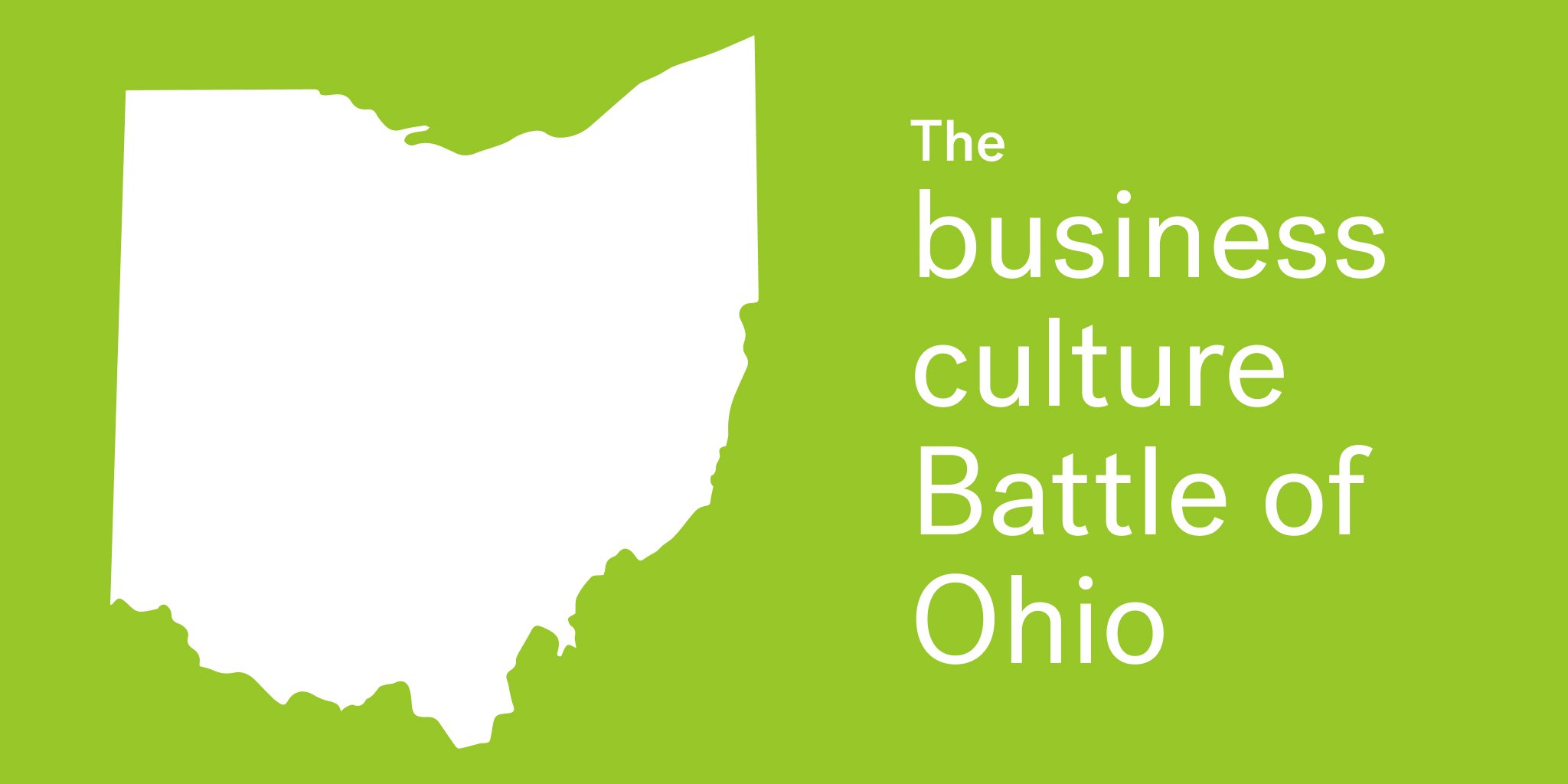The business culture Battle of Ohio

Are you ready for some football?
Next Monday night is the 98th “Battle of Ohio”—the term used to describe any game in which Ohio’s two professional football teams face each other: the Cleveland Browns and the Cincinnati Bengals. The Bengals lead the all-time series, 51 to 46.
I grew up in Wooster, a small town in rural Northeast Ohio. My siblings work in the same family business my dad and his dad before him ran. My mom (from the east coast) taught us that, unlike our friends, we were supposed to say “soda” instead of “pop”. We ate walleye and learned about lake-effect snow. But if there’s one thing that brought everyone from our town together, it was that we were cursed to be Browns fans.
We went through a lot. In elementary school, I was scarred by The Drive and The Fumble. Little did I know those painful experiences would be the closest the Browns would get to success. I left for college, and the team was moved by hated owner Art Modell to Baltimore. Anger and tears followed; we bombarded the league with outrage (and paper faxes sent via early internet sites) and got our name, our records, and our colors back—glued to an expansion team.
But the worst was still to come: twenty years in which the Browns won once on opening day and lost 19 times. A two-year stretch in which the Browns won one game and lost an almost impossible-to-comprehend 31 games. I watched all of them. I’ve celebrated only one playoff win since the turn of the millennium.
Even back when I was a kid, though we cared about our record, we cared about one thing more: beating our division rivals. And few rivalries were as fierce as that with our cross-state rivals, the Cincinnati Bengals. One of the most legendary football coaches of all time, Paul Brown (led the Browns to 7 pre-Super Bowl-era championships) was chased out of Cleveland by dirtbag Art Modell and left to found the Bengals. His family still owns the team today.
But how different are Cleveland and Cincinnati really, Skyline Chili aside? Textio recently took a look at the most common language used by the biggest employers in both cities. We analyzed public job posts to see what patterns showed up. After all, just like football teams, language preferences are hyper local, and language is the surest window into culture.
Here’s what we found.

The people of Cleveland value “integrity” and people with a “proven record” even if the Browns don’t seem to. Perhaps that’s why, when Cleveland employers are looking for candidates with a proven record (which they do three times more often than Cincinnati employers) people are much less likely to apply for the roles!
By contrast, over in the Bengals’ neck of the woods, candidate respond positively to employers looking for “agility” and “work ethic.” And in fact, Cincinnati organizations use these phrases two to three times more often than Cleveland employers do. Figures that the Bengals are the reigning AFC champions.
When I took a look at this data, I came to one simple conclusion: despite what my dad would have said, we Ohioans have a lot more in common than we like to admit. We share many of the same values—and we’re all still looking for that first Super Bowl ring.